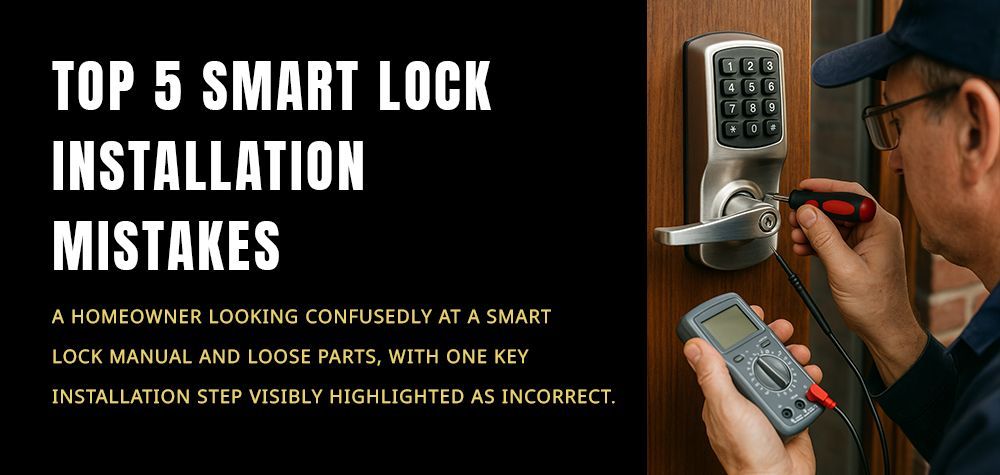How to Pick an Office Door Lock
Understanding Office Door Lock Types
Mechanical Locks
Mechanical locks have been the traditional choice for securing office doors, providing a reliable and time-tested means of access control. These locks operate purely through mechanical components without the need for electronic or digital systems. One of the most common types of mechanical locks is the cylinder lock, which consists of a cylindrical plug that rotates within a housing to engage or disengage a locking mechanism. Cylinder locks are versatile and can be found in various configurations, including single-cylinder and double-cylinder designs. Another popular mechanical lock option is the mortise lock, which is installed within the door's mortise pocket and offers robust security due to its heavy-duty construction. Lever handle locks are also prevalent in office settings, featuring a lever handle that must be lifted or depressed to operate the locking mechanism. These locks are often chosen for their ease of use and ADA compliance, making them suitable for commercial environments where accessibility is a priority.
In addition to their durability and reliability, mechanical locks offer the advantage of simplicity and ease of maintenance. Unlike electronic locks, mechanical locks do not rely on batteries or electronic components, reducing the risk of malfunctions or power outages affecting access control. Furthermore, mechanical locks provide a tangible sense of security, with users able to physically see and feel the locking mechanism engage. This tactile feedback can instill confidence in occupants and serve as a visible deterrent to potential intruders. Overall, mechanical locks remain a popular choice for office door security due to their proven effectiveness, simplicity, and cost-efficiency.
Electronic Locks
Electronic locks represent a modern and sophisticated approach to office door security, leveraging advanced technology to enhance access control and monitoring capabilities. These locks utilize electronic components such as keypads, card readers, or biometric scanners to authenticate users and grant access. Keypad locks, for example, require users to enter a numeric code or PIN to unlock the door, providing a customizable and easily programmable access solution. Card reader locks, on the other hand, utilize proximity cards or key fobs that must be presented to the reader for authentication. This method offers convenience for users and allows for quick and seamless access control management.
Biometric locks take electronic security to the next level by using unique biological characteristics such as fingerprints, iris patterns, or facial recognition to verify user identities. These locks offer unparalleled security and accuracy, as biometric traits are inherently difficult to replicate or forge. Additionally, biometric locks eliminate the need for keys or access cards, reducing the risk of unauthorized access due to lost or stolen credentials. With their advanced features and cutting-edge technology, electronic locks provide businesses with a comprehensive and customizable security solution for protecting their office premises. Whether it's keypad, card reader, or biometric locks, the versatility and innovation of electronic locking systems make them an ideal choice for modern office environments looking to upgrade their access control measures.
Read more about What to do when car won't open from inside!
Assessing Security Needs and Requirements
Security Level
When assessing security needs for office door locks, it's essential to determine the desired level of security based on the specific requirements of the business. Factors such as the nature of the business, the value of assets stored within the premises, and the potential risks of unauthorized access should be taken into consideration. Additionally, the office location and surrounding crime rates can influence the security level required. Offices located in high-crime areas or with valuable assets may require more robust security measures to mitigate potential risks effectively.
Access Control
Identifying who needs access to the office premises is crucial for establishing effective access control measures. This involves defining access levels and permissions for different groups of individuals, including employees, managers, contractors, and visitors. Access control systems should be designed to restrict access to authorized personnel while providing convenient and seamless entry for authorized individuals. By clearly defining access levels and permissions, businesses can prevent unauthorized entry and protect sensitive areas within the office environment.
Compliance and Regulations
Ensuring compliance with building codes and standards is essential for meeting legal and regulatory requirements related to office security. Building codes may dictate specific requirements for door locks, such as fire safety standards or accessibility guidelines. Additionally, businesses operating in regulated industries, such as healthcare or finance, must adhere to industry-specific regulations such as HIPAA (Health Insurance Portability and Accountability Act) or GDPR (General Data Protection Regulation). By ensuring compliance with these regulations, businesses can avoid legal liabilities and maintain the integrity of their security protocols.

Factors to Consider When Choosing Office Door Locks
Durability and Reliability
When selecting office door locks, durability and reliability are paramount considerations. Assessing the quality and longevity of lock mechanisms is essential to ensure that the chosen locks can withstand the rigors of daily use and provide long-term security for the office premises. Factors such as the material composition, construction, and manufacturing standards of the locks should be evaluated to determine their durability. Additionally, environmental factors such as weather conditions and foot traffic in the office area should be taken into account to select locks that can withstand these challenges effectively.
Ease of Use
User-friendliness is another critical factor to consider when choosing office door locks. The locks should be easy to operate for employees, ensuring smooth and hassle-free access to the office premises. Evaluating the ergonomic design and functionality of the locks is essential to provide a positive user experience. Additionally, locks should require minimal maintenance and upkeep to ensure ongoing reliability and functionality. By selecting locks that are intuitive and user-friendly, businesses can enhance convenience and productivity in the workplace.
Integration with Security Systems
Integration with existing security infrastructure is crucial for maximizing the effectiveness of office door locks. Compatibility with access control systems, surveillance cameras, and other security devices allows for seamless integration and centralized management of security measures. By selecting locks that can integrate with these systems, businesses can enhance overall security measures and improve incident response capabilities. Additionally, seamless integration enables efficient monitoring and control of access to the office premises, enhancing security management processes.
Cost and Budget
Cost considerations play a significant role in the selection of office door locks, requiring businesses to balance security needs with budget constraints. Setting a realistic budget for lock installation is essential to ensure that the chosen locks align with the financial resources available. Businesses should consider the upfront costs of lock installation as well as ongoing maintenance and operational expenses. By evaluating the cost-effectiveness of different lock options and considering long-term maintenance requirements, businesses can make informed decisions that prioritize security while staying within budgetary constraints.
Learn more about Why your car key isn't working!
Steps to Select and Install Office Door Locks
Research and Consultation
Before selecting and installing office door locks, it's essential to conduct thorough research and seek expert consultation. Begin by gathering information on available lock options, including mechanical and electronic locks, and assess their suitability for your office security needs. Consulting with security professionals or locksmiths can provide valuable insights and recommendations based on your specific requirements and budget constraints.
Product Evaluation
Once you've gathered information on available lock options, it's time to evaluate the products based on their specifications and features. Review product details such as security ratings, durability, ease of use, and compatibility with your existing security infrastructure. Compare different brands and models to identify the best fit for your office security requirements and budget.
Installation Planning
After selecting the appropriate office door locks, assess the installation requirements to ensure a smooth and efficient installation process. Consider factors such as the type of door and frame compatibility to determine the most suitable installation method. Decide whether professional installation by a locksmith or DIY installation is preferable based on your expertise and resources.
Testing and Training
Before finalizing the installation of office door locks, it's essential to conduct thorough testing to ensure proper functionality and security measures. Test the lock's functionality, including locking and unlocking mechanisms, to verify its reliability and effectiveness. Additionally, provide training for employees on lock operation and security protocols to ensure they understand how to use the locks correctly and adhere to security procedures. By testing and training, you can ensure that your office door locks are installed correctly and effectively contribute to your overall security measures.
Maintenance and Security Protocols
Regular Maintenance
Maintaining office door locks is essential for ensuring their continued functionality and security. Implementing routine inspections and lubrication schedules can help prevent issues such as jamming or malfunctioning locks. Addressing wear and tear or malfunctions promptly can prevent security vulnerabilities and extend the lifespan of the locks. By prioritizing regular maintenance, businesses can minimize the risk of security breaches and maintain optimal security levels.
Security Protocols
Establishing robust security protocols is crucial for enhancing office security and protecting against unauthorized access. This includes developing access control policies and procedures that dictate who has access to various areas of the office premises. Educating employees on security best practices and emergency protocols, such as how to respond to security breaches or emergencies, is essential for ensuring a secure workplace environment. By establishing clear security protocols and providing comprehensive training, businesses can empower employees to contribute to maintaining a safe and secure workplace.
Conclusion
Selecting and installing office door locks is a critical aspect of overall office security. By following the steps outlined in this guide, including thorough research, product evaluation, installation planning, and testing, businesses can ensure that their office door locks effectively meet their security needs. Additionally, implementing regular maintenance and robust security protocols can help maintain the integrity of office door locks and enhance overall security levels. By prioritizing security measures and staying vigilant, businesses can create a safe and secure environment for employees and visitors alike.
Call Us Any Time!







